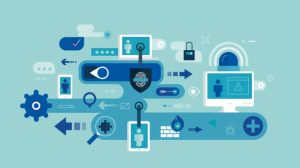In today’s digital age, social media has become an integral part of our daily lives. From connecting with friends and family to promoting businesses and sharing content, platforms like Facebook, Twitter, and Instagram offer unparalleled opportunities for communication and engagement. However, beneath the surface of social media lies a dark side fraught with cybersecurity risks. In this blog, we’ll explore the potential dangers of social media cybersecurity risks and provide essential tips for protecting yourself and your business against cyber threats.
The Cybersecurity Risks of Social Media
While social media platforms offer numerous benefits, they also pose significant cybersecurity risks. Here are some of the most common threats associated with social media:
-
Phishing Attacks:
Cybercriminals often use social media to launch phishing attacks, where they impersonate trusted entities to trick users into divulging sensitive information such as passwords or financial details.
-
Malware Distribution:
Malicious links and attachments disguised as legitimate content can infect users’ devices with malware, including viruses, ransomware, and spyware.
-
Identity Theft:
Personal information shared on social media, such as birthdates, addresses, and contact details, can be exploited by cybercriminals for identity theft and fraud.
-
Privacy Concerns:
Social media platforms collect vast amounts of user data, raising concerns about privacy and data security. Unauthorized access to this data can lead to privacy breaches and compromise users’ sensitive information.
Essential Tips for Cybersecurity on Social Media
To mitigate the cybersecurity risks associated with social media, it’s essential to adopt proactive measures to protect yourself and your business. Here are some essential tips:
-
Use Strong, Unique Passwords:
Create strong, unique passwords for your social media accounts and avoid using the same password across multiple platforms. Consider using a password manager to securely store and manage your passwords.
-
Enable Two-Factor Authentication (2FA):
Enhance the security of your social media accounts by enabling two-factor authentication. This adds an extra layer of protection by requiring users to provide a secondary verification method, such as a code sent to their mobile device, in addition to their password.
-
Be Wary of Suspicious Links and Messages:
Exercise caution when clicking on links or opening messages from unknown or suspicious sources. Verify the authenticity of the sender before engaging with any content, and be mindful of phishing attempts.
-
Review Privacy Settings:
Regularly review and update your privacy settings on social media platforms to control who can see your posts, access your personal information, and interact with your account. Limit the amount of information you share publicly to reduce the risk of privacy breaches.
-
Educate Employees:
If you’re managing social media accounts for your business, educate employees about cybersecurity best practices and the potential risks associated with social media. Implement policies and guidelines to govern the use of social media for business purposes and ensure that employees adhere to security protocols.
-
Monitor Account Activity:
Keep a close eye on your social media account activity and be vigilant for any signs of unauthorized access or suspicious behavior. Report any unusual activity to the platform’s support team and take immediate steps to secure your account.
While social media offers numerous benefits, it’s essential to be aware of the cybersecurity risks lurking beneath the surface. By adopting proactive security measures and staying vigilant, you can protect yourself and your business against potential threats on social media. From using strong passwords and enabling two-factor authentication to being wary of suspicious links and educating employees, every step plays a crucial role in safeguarding your digital presence. By taking cybersecurity seriously, you can enjoy the benefits of social media while minimizing the associated risks.






